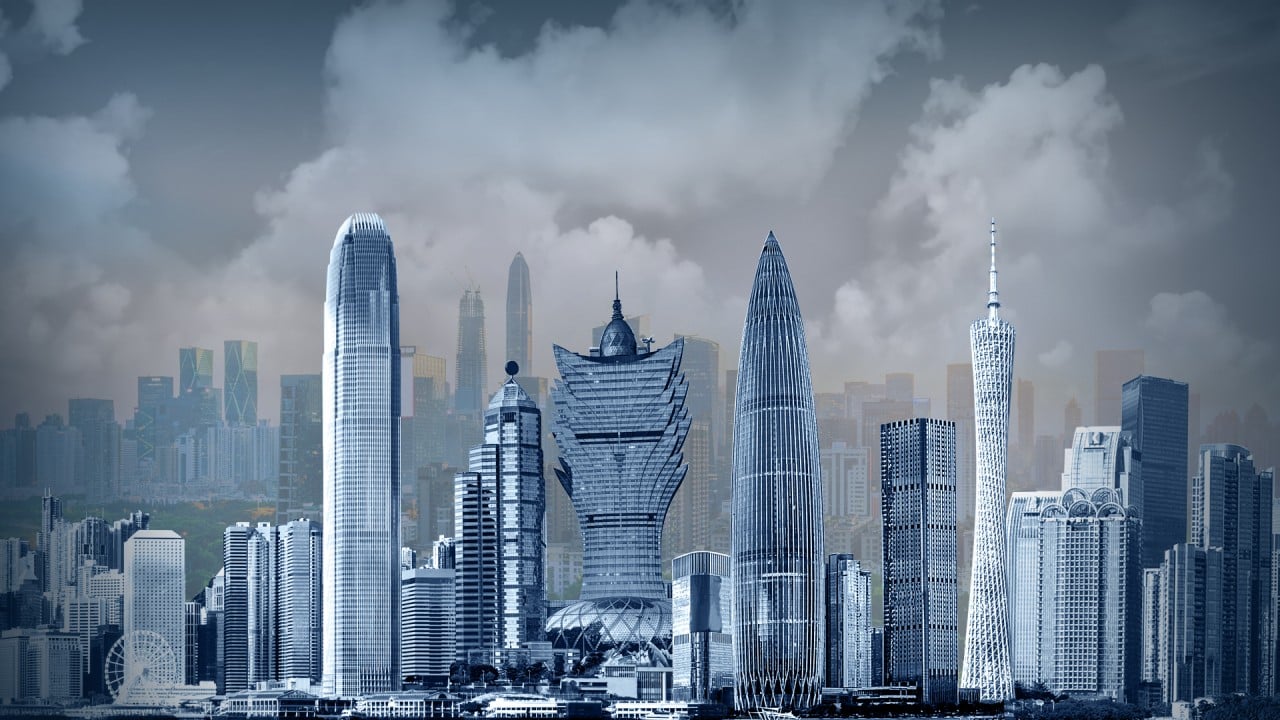
Hong Kong green campaigners find brownfield sites expanding into northern New Territories’ nature conservation areas
- Site checks and comparisons with satellite photos show brownfield areas expanded by more than five hectares
- Environmental campaigners say land owners are damaging nature areas ahead of work on massive Northern Metropolis hub
Hong Kong environmental campaigners are concerned that more than five hectares of marine reserve and wetland areas have been encroached on at the site of a major new development in the northern New Territories.
Their checks and comparisons with satellite photographs showed that possible brownfield operations – the use of rural land for warehouses and industrial or logistics use – had expanded into nature conservation areas, they said on Saturday.
Environmental group Greenpeace said the findings raised suspicions that landowners were trying to lower the conservation value of the areas in advance of construction of the Northern Metropolis, a new IT and housing development planned near the border with mainland China.
“As long as the land has been damaged, it will not be included within the wetlands,” said Chan Hall-sion, senior campaigner for the group, said.
The 5.2 hectares were inside the proposed Northern Metropolis boundary. The ambitious plan includes the creation of three wetland conservation parks.

Secretary for Environment and Ecology Tse Chin-wan has said the government would redraw the boundaries of the wetland conservation and buffer areas.
But Chan said damage done to the nature areas before the government could start work ran counter to its intentions for conservation.
Greenpeace and Liber Research Community, a non-governmental organisation, conducted the study between July and November. They carried out site inspections, examined satellite photos and compared them with what they observed in June last year.
They found that brownfield sites had grown by 38 hectares (94 acres) scattered over 135 plots in Yuen Long and North district, adding to the 1,736 hectares of existing sites they identified last year.
The area includes 167 hectares in conservation and buffer areas, with 80 per cent in wetland buffer zones and the rest in marine reserves and wetland areas.
The study found a 1.3-hectare brownfield site in a wetland conservation zone and its surrounding areas south of the Hong Kong Wetland Park at Tin Shui Wai. Between August and last month, the site almost doubled in size.
At another conservation area in the proposed Hoo Hok Wai wetland park, an October satellite image showed that about half a hectare of vegetation had been cleared since a similar photo was taken in March.
The Environmental Protection Department said it had inspected both sites and found no construction there.
A spokeswoman added a recent inspection found that some plants had returned to the site at Hoo Hok Wai.
She emphasised that the department would continue to monitor the situation and take action if rules were breached.
The government plans to build multistorey industrial buildings in new towns to accommodate some brownfield operations, but Chan questioned if that was enough to meet rising demand.
Less than a third of the floor area of the new buildings will be set aside for operators uprooted by development plans.
Chan was concerned that more nature areas might be at risk from encroaching brownfield operations as many operators had not yet relocated.
“The government should grab the chance to settle the problem by formulating brownfield policies, including the prevention of sites emerging and owners should bear bigger costs for extending their brownfield sites,” she said.
Development chief vows to help Hong Kong factories uprooted by housing push
The government identified 1,414 hectares of brownfield sites in use in 2019, of which 615 hectares could be used for new town developments.
The Development Bureau said affected operators would be compensated and they could apply for space in the new industrial buildings.
Any developments or alterations in conservation and agricultural zones, such as filling in of land or a pond, needs permission from the Town Planning Board.
Landowners face a fine of up to HK$500,000 (US$64,212) for a first offence of unauthorised development and HK$1 million for subsequent convictions.
The bureau told the Post the Planning Department carried out inspections in conservation areas from time to time, monitored illegal development and collected evidence using drones.
The spokeswoman added that the department had taken action in locations where the law had been broken, including Hoo Hok Wai.
She said the department would continue to monitor other locations and take enforcement action if needed.
The bureau also said the government would help brownfield operators to resettle on suitable land and strengthen enforcement against illegal operations.
Hong Kong seeks higher plot ratios, building heights in Northern Metropolis
Town Planning Board member Billy Hau Chi-hang, who did not refer to specific cases, said new brownfield sites were probably illegal because, as far as he knew, the board had not approved fresh applications in rural areas.
He appealed to the Planning Department to step up enforcement instead of drawing up new rules.
“The department has a team in every district. They should be familiar with the situation … If there are too many brownfield sites, the government can increase manpower accordingly,” said Hau, an academic at the University of Hong Kong.
The department at present only makes landowners restore sites where unauthorised development had happened by planting vegetation, but Hau said more could be done.
He said, for example, landowners could be forced to return a pond to its original state.


